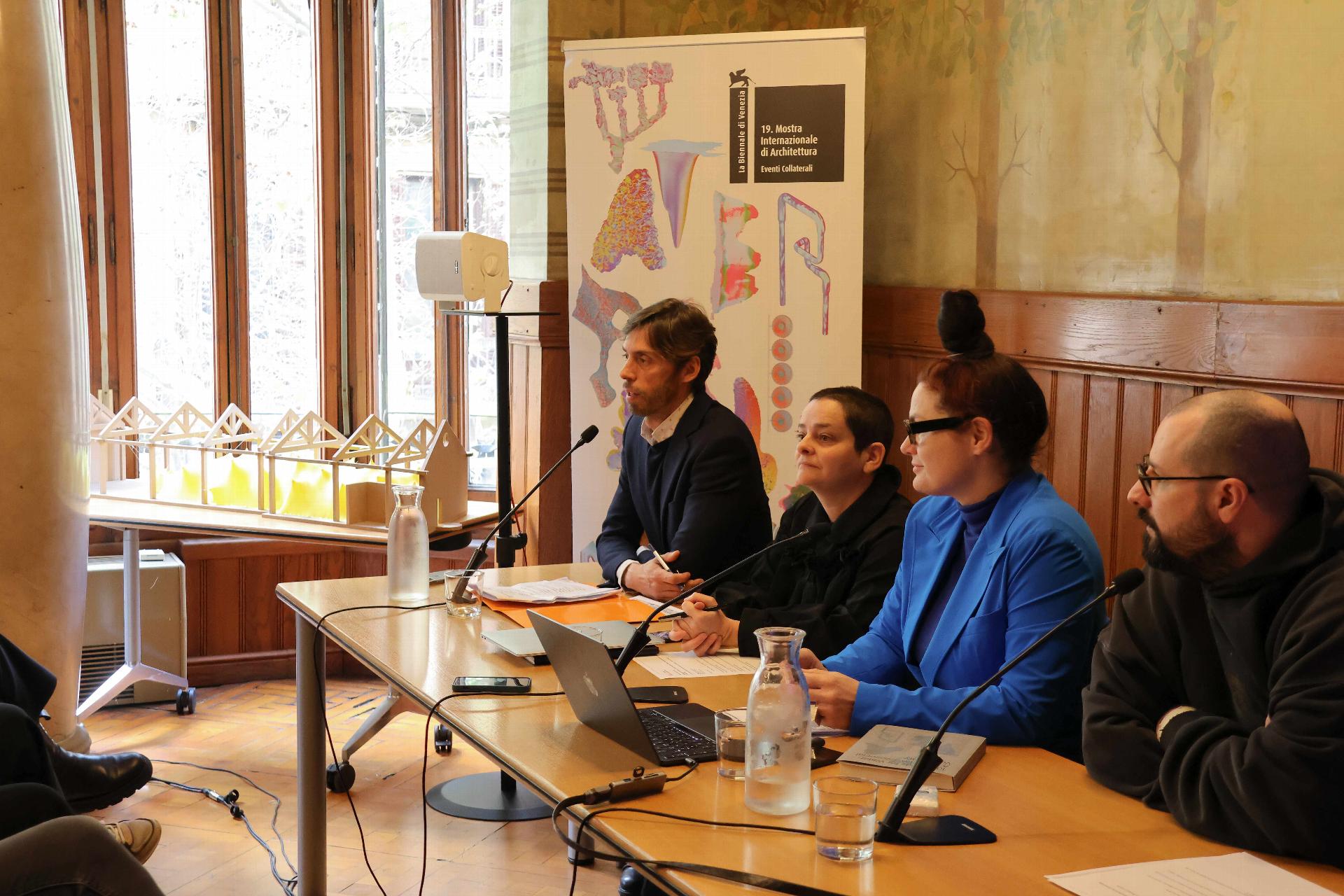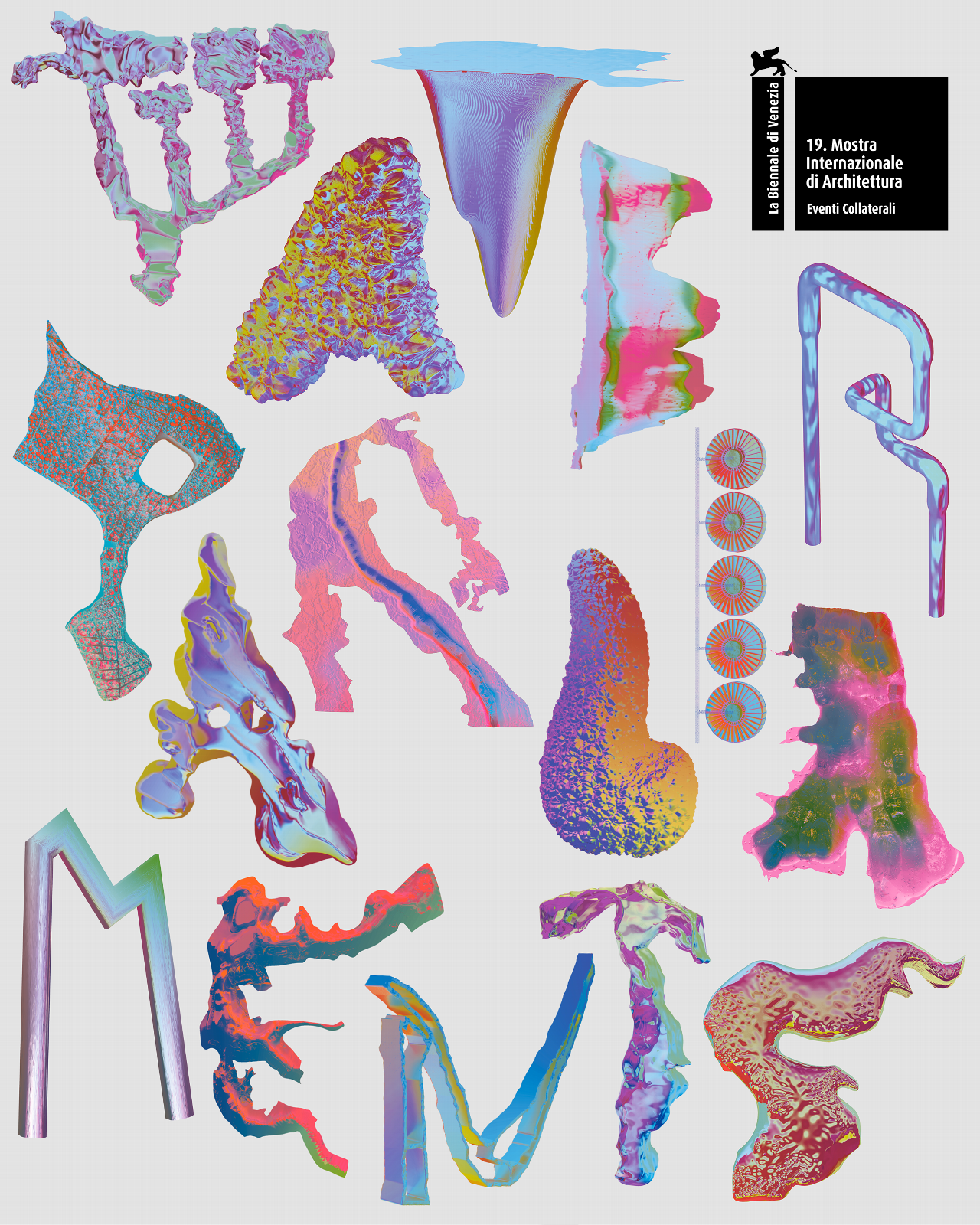This Wednesday, the Institut Ramon Llull presented Water Parliaments: Projective Ecosocial Architectures, Catalonia in Venice’s proposal for the Biennale Architettura 2025, which invites the world to join a global conversation on sustainable futures and the crucial role of water in shaping them. Curated, designed and produced by Eva Franch i Gilabert, Mireia Luzárraga and Alejandro Muiño, the exhibition Parlaments d’Aigua explores the fundamental role of water as a vital resource and cultural agent, addressing climate crisis through architecture, interdisciplinary research and innovative design.
The 19th International Architecture Exhibition – La Biennale di Venezia is directed by Italian architect and professor Carlo Ratti, who has chosen Intelligens. Natural. Artificial. Collective. as the central theme. The director of the IRL, Pere Almeda, stated that “in a world that is adrift, Carlo Ratti invites us to talk about intelligences, and it is necessary to apply them to water management, an essential element for the viability of any ecosystem”. Almeda also highlighted the “huge” presence of Catalan and Balearic architecture in this year’s edition, both in the official exhibition, with the participation of five studios, and in other pavilions, “showing that our architecture is present in spaces of influence, global debate and creation, proposing new languages and new solutions”. He also recalled that next year Catalan and Balearic architecture will take centre stage internationally with the World Congress of Architecture of the International Union of Architects (UIA) being held in Barcelona.
Eva Franch i Gilabert said that “all architecture is water architecture, as water plays an essential role not only as a resource to be consumed but as a structural element that articulates our life”. In this sense, she pointed out that “this project seeks to align architecture with one of the major contemporary crises, which is the water crisis, and to show how architecture can respond to collective aspirations as a society, through a practice often considered non-essential, such as speculation and imagination”. Mireia Luzárraga contextualised how the water crisis affects the entire planet and explained that during the preliminary research they found a lack of critical studies of the Catalan, Valencian and Balearic territories, “we set out to carry out this work focused on our own territory, with a view to exporting it on a global scale”. Alejandro Muiño, for his part, emphasised the desire to “work in an intersectional manner, where architecture merges with politics, territory, biology... and attempts to imagine multi-species futures that allow us to escape this issue in a democratic way”.
The curatorial team explained the four elements that structure the project:
The Future Laboratories, with more than 100 local voices. Over the past six months, the curators have conducted multidisciplinary workshops across Catalan, Balearic and Valencian territories in collaboration with various cultural institutions. These sessions involved scientists, artists, farmers and activists, and highlight local knowledge to imagine innovative strategies to face a future inevitably shaped by climate change. The Future Laboratories form the foundation of the work to be shown at the 2025 Architecture Biennale.
The exhibition at the Docks Cantieri Cucchini, Venice. The installation is divided into two areas. The first features several short audiovisual pieces that illustrate the research carried out for this project. The second area displays a collection of speculative prototypes and installations—projective architectures—under a fabric structure that is tense yet fluid. The installation is accompanied by cycles of mist and audiovisual supports that provide a unique sensory experience, creating a poetic space for dialogue and action.
The Book. The project includes a publication titled 100 Words for Water: A Vocabulary, which collects more than 100 new terms related to water, proposed and defined by collaborators from around the world such as Stacy Alaimo, Markus Bader, Chan Carson, Beatriz Colomina, Cooking Sections, José Luis de Vicente, Elvira Dyangani Ose, Sana Frini, Macarena Gomez-Barris, Samia Henni, Andrés Jaque, Lydia Kallipoliti, Iván L. Munuera, Matsipa Mpho, Marina Otero, Spyros Papapetros, Philippe Rahm, James Taylor Foster, Julia Watson, Albena Yaneva and Liam Young. Edited by Eva Franch i Gilabert, Mireia Luzárraga and Alejandro Muiño, the book is an initiative of the Institut Ramon Llull and the Col·legi d'Arquitectes de Catalunya (COAC), and the English version is published by Lars Müller Publishers.
The Atlas: Water Architectures. This is an online repository, updated through an open call for contributions, that documents the interactions of architecture, culture and ecology with water on both a local and global scale.
Eva Franch i Gilabert (Delta de l’Ebre, 1978) is an architect, curator, researcher and professor at UMPRUM in Prague. She has led institutions such as the AA Architectural Association in London and Storefront for Art and Architecture in New York and has taught at various universities, including Cooper Union, Princeton SoA, Rice University, and Columbia University GSAPP. Considered one of the most influential voices in the international architectural community, she has curated over 30 exhibitions around the world, from Taipei to Buenos Aires and Berlin, exploring the future through art, design and architecture.
Mireia Luzárraga (Madrid, 1981) and Alejandro Muiño (Barcelona, 1982) lead TAKK architecture and research studio, based in Barcelona and New York. Their work combines feminism and ecology to promote fairer living conditions. Luzárraga is an adjunct professor at Columbia University GSAPP in New York and both are visiting professors at the University of Tokyo. They have received several awards, including the “Design Vanguard 2024” and the “FAD 2023”, and their work is part of collections in museums such as the FRAC Centre, the Vitra Design Museum, and the DHub Barcelona.
The Institut Ramon Llull produces and organises the participation of Catalonia and the Balearic Islands in the Eventi Collaterali of the Venice Biennale. It has participated in the Architecture Biennale since 2012 and the Art Biennale since 2009. The presented project is always selected by a jury composed of professionals with a broad and recognised international career. On this occasion, the expert committee was chaired by Pau Bajet and Tomeu Ramis, members of the curatorial team for the proposal Becoming, Architectures for a Planet in Transition of the 2026 UIA World Congress of Architecture, with a single vote. The members were Maria Buhigas, Chief Architect of Barcelona City Council; Judit Carrera, Director of the Centre de Cultura Contemporània de Barcelona (CCCB); Guim Costa, Dean of the Col·legi d’Arquitectes de Catalunya (COAC); Marina Otero Verzier, architect, curator and researcher, curator of the Dutch Pavilion at the 2018 Venice Architecture Biennale and co-curator of the 13th Shanghai Biennale 2021; and Eva Serrats, architect and co-curator of the Catalan culture exhibition at the 2023 Venice Architecture Biennale (Seguint el peix).









